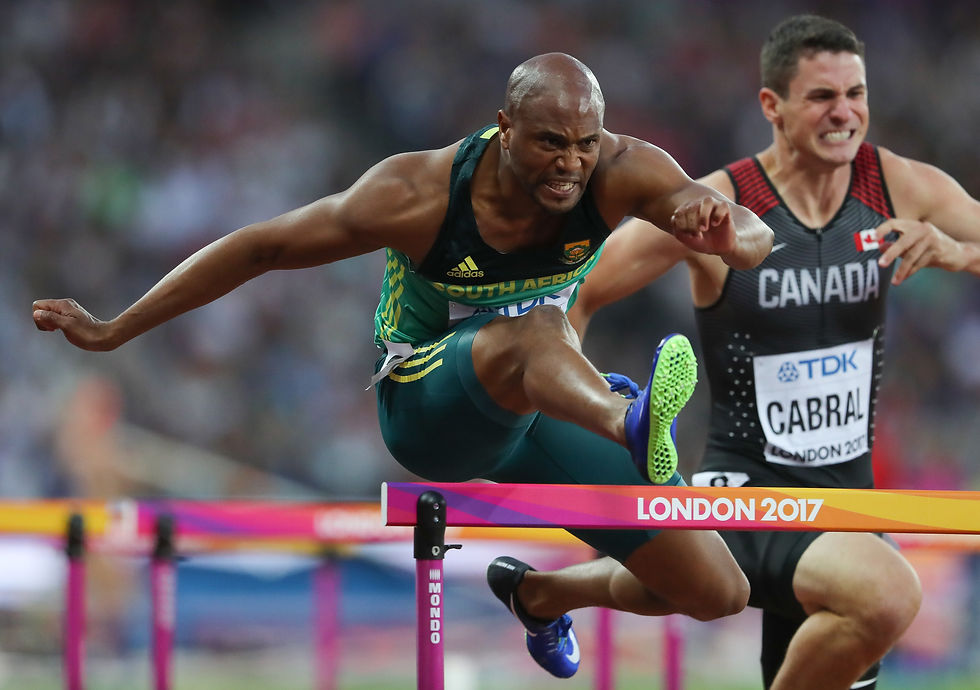'I'm self-funded. I'm not sponsored' - Medals cost money.
After the disappointing performance in Budapest last week, an avalanche of criticism has descended on the local athletics community as armchair critics and keyboard warriors voice their dissatisfaction about yet another World Championships bereft of medals. And for overseeing the worst performance by a South African team since 1993, many pundits correctly point out that the Athletics South Africa (ASA) must shoulder some of the blame for failing to adequately prepare the team in some respects.
For example, Akani Simbine was forthright in asserting his belief that the men's 4x100m relay team could have won a medal had they been afforded enough time to train together. "The guys are ready to run. I think we would have won this or given America a run for their money. Next year in Paris, we can actually win. But we just need time together. We don't have time together. We always just come together during Championships, figuring it out during Championships and expecting the same thing. Last year we did the same thing," said the two-time Olympic finalist after South Africa dropped the baton during the 4x100m relay final in Hungary.

Others have lamented the lack of grassroots development as being the key bottleneck resulting in a lack of performance at the highest level. But the facts do not support this argument. That is because despite the reality that many South African children do not enjoy sufficient access to structured coaching and suitable training facilities, the country because of the strength of school and university athletics system is still able to produce a steady stream of athletes capable of global success. And the numbers don't lie. South Africa finished in fifth place on the medals table at the 2022 World Athletics U20 Championships, sixth in 2021 and 2018, while collecting five medals in the athletics competition at the recently concluded World University Games in China. So what can be done to produce more Olympic and World Championship finalists and ultimately medals? What is the real problem?
Money. Or at least a lack thereof. What the casual athletics observer fails to realise is that with the exception of athletes like Wayde van Niekerk and Simbine that are competing on the Diamond League and earning in Euros and Dollars, most of the country's top runners are just struggling to survive. Take Antonio Alkana for example. Anywhere else in the world an area and national record holder would receive the necessary financial support to ensure that he maximises his abilities. Not in South Africa. The fastest 110m hurdler in Africa (13.11) and a bronze medalist at the African Championships is quite astonishingly a self-funded athlete that's forced to win prize money or starve.

"Financially it's tough. I'm self-funded. I'm not sponsored. So all the winnings goes to accommodation and flights in Europe. It's been difficult to make ends meet, because I have a family as well. I've got two kids. It's been difficult, no lies. But the passion I have for the sport is still pushing me to try and achieve more," he revealed. And he's not alone. Another African Record holder Wayne Snyman (2:31:15 in the 35km Walk) is a high school Geography teacher. This 7-time SA race walking champion who took seventh place at last year's World Race Walking Cup in Oman, was only able to prepare for and compete at Budapest because of the support he received from his employer at Curro Hillcrest in the form of time off.
But probably the best example of the financial sacrifice that most South African athletes need to make to represent the country is that of Prudence Sekgodišo. Originally from Limpopo, but now living and training in Pretoria under the watchful eye of coach Samuel Sepeng, the 21-year-old who made her Diamond League debut in 2022 made the brave decision to forgo lucrative European racing opportunities this season in order to focus on the World Championships. But after falling in the semi-final, Sekgodišo returns home empty handed. Will she make a similar sacrifice ahead of Paris 2024? Would you?
While there will always be talented outliers such as van Niekerk, Luvo Manyoga and Caster Semenya who will win medals regardless of the circumstances, greater systematic investment is required to produce a generation of athletes capable of consistently delivering their best performances at the highest level. It's time we in the athletics community got serious. You need dollars to compete with America, where many South African top runners with the potential of reaching an Olympic final don't even have medical aid. Unless urgent financial intervention is made where the top national athletes are contracted by the federation with bonuses paid for reaching a final and earning a medal, then Paris 2024 will simply be the same if not worse than Budapest 2023. In the era of professional sport, medals cost money. That's the bottom line.


How much money, and to who, on what basis, which events, where does the money come from? how is this
different from the successful years in the past? If your going to invest, make sure your coaches are well supported, that's where the rubber hits the tar, successful athletes transitioning from "trying to survive" to being able to "thrive" are with resourceful coaches that don't take NO for an answer, and as our Afrikaans friends will say "maak n plan". Well this is my view anyway.